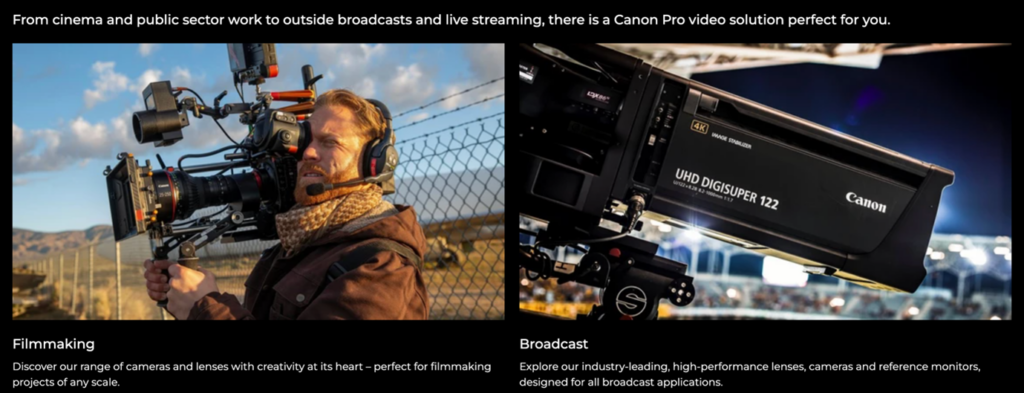It feels like all change, all the time in broadcast technology marketing. The launch of dozens of local and global streaming platforms, the growth of gaming to a $200 billion entertainment industry, the mainstreaming of regional-language streaming content from Korean and Polish are just three new megatrends that spring to mind: you’re probably reeling off a couple of other game-changers as you read this.
With such a fluid landscape, your addressable market, competitors, and even selling points can vary constantly. How do the market leaders keep their lead engine functioning consistently and smoothly? In this article, we’ll explore some of the key marketing trends that savvy broadcast industry marketers are using to gain a competitive edge.
Personalisation and targeted marketing
Video-on-demand platform providers are masters of content personalisation at a B2C level. The old industry story goes that no two people in the world have the same Netflix home screen – the programmes recommended for you are based on such deep analytics of the shows you consume, how you watch them, who you watch, when you watch, and more. And as an inevitable extension, personalisation has become a key driver of marketing success for B2B broadcast technology.
Canon’s professional video solutions website is a great example: allowing readers to self-qualify themselves and providing tailored information for each segment.

Use of data from your own platforms
Artificial intelligence (AI) and machine learning (ML) technologies are increasingly being integrated into various aspects of the broadcast industry. From content recommendation algorithms to automated production processes, AI-powered solutions are analysing vast lakes of data to revolutionise how content is created, distributed, and consumed.
Marketers, too, are harnessing the power of all this data to provide insights into trends that are of real value to prospective buyers. This 2024 broadcast trends report from Harker Bros is a rich source of data for prospects.
Video and interactive content formats
Just because it’s tech B2B doesn’t mean it has to be boring! Long white papers with ‘walls of text’ are being used less and less by savvy broadcast marketers, who are instead opting for more engaging formats such as video and interactivity. These formats are proven to engage audiences better.
Additionally, incorporating users and other partners into marketing campaigns can further enhance authenticity make them pop a little. This broadcast technology resource center from Brightcove uses video content generously, and gives plenty of screen time to partners, customers, and vendors. It not only works better but also aligns with the brand proposition.
How-to and insightful guides
Fast-paced change is a given in broadcast tech so insightful and strategic content that focusses on the pain points of readers has always been a strong driver of leads. A top tip here is to ensure that your content truly adds value and provides a unique perspective, the more focussed the better (see the point above on personalisation). For example, this white paper from streaming analytics and smart multi-CDN solution provider NPAW provides detailed insights tailored to the pain points of fitness-on-demand providers.
Content partnerships and collaborations
“No!” we hear you cry. “With broadcast tech it’s different! Business influencers can’t take a photo of my platform in front of the Eiffel Tower: also, my buyers aren’t going to click on a link to purchase.”
We understand. As the Isoline 2024 tech content marketing survey found, your buyers usually start the buying journey reading reviews and thought leadership articles, checking specs and Googling everything out there on the topic. They spend hours upon hours researching technology, asking questions, and bouncing ideas off their network.
But this isn’t to say collaboration is not for broadcast B2B tech companies. Collaborating is a great way to share resources and complement one another’s specific set of expertise. If you pursue an influencer partnership, you can utilise the relationships they hold with their captive audience and benefit from higher levels of content engagement. When collaborating with someone in your supply chain, they bring an understanding and expertise within different aspects of the industry, widening your remit.
Data privacy and consumer trust
In an era of growing concern over data privacy and security, maintaining consumer trust is paramount for broadcasters and marketers alike. Transparency in data collection and handling practices, coupled with stringent privacy policies, is essential for building and maintaining trust with audiences. In their eagerness to personalise, marketers can sometimes fall foul of data protection laws: so keep these potential pitfalls in mind.
2024: Challenges and opportunities for broadcast marketers
As you ramp up for the major trade shows of the year it is always good practice to add one or two new marketing techniques to your toolkit. Adapting to new technologies and consumer trends requires agility and flexibility, as well as a willingness to experiment and take risks. By embracing innovation and staying ahead of the curve, marketers can position themselves for success in an increasingly competitive landscape.
Conclusion
Although it may not seem obvious at first, there are parallels to be drawn between what is happening in the broadcast space and how its vendors should approach content marketing.
Today, barriers to entry are lower. Generating content – whether manually or using generative AI tools – is easier, so there’s more noise out there than ever. The aim of the game hasn’t changed – attract the customer, convert the customer – but the rules of engagement certainly have. Content efforts, much like the business strategies of streaming giants, cannot exist in a vacuum. They need to be part of a larger ecosystem.
Developing a single white paper, making it available on your website, then crossing your fingers isn’t likely to generate leads. A systematic content marketing strategy is needed, cutting through the complexity of your solutions to build a relationship with your prospects and generate trust. All delivered via a joined-up sales enablement process that underpins lead generation.
There are no two ways about it: much like Disney+ to the House of Mouse, content marketing has become an essential part of the overall marketing machine. It’s an ecosystem with its own rules and best practices, regardless of company size. Getting this right can be the difference between standing out in a crowded space or getting lost in the shuffle.
If you feel your own broadcast content marketing efforts could benefit from an ecosystem approach, drop us a line: hello@isolinecomms.com
Like what you just read?
There’s more where that came from. Sign up to our newsletter to get the latest B2B tech news, content marketing insights, tips, tricks, memes, and more, delivered straight into your inbox every month.



